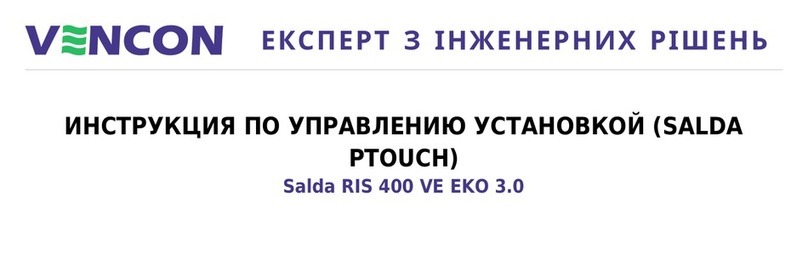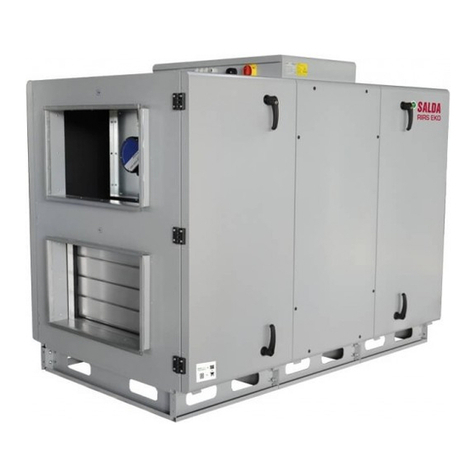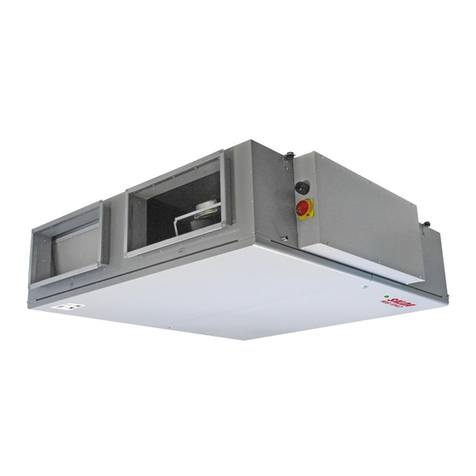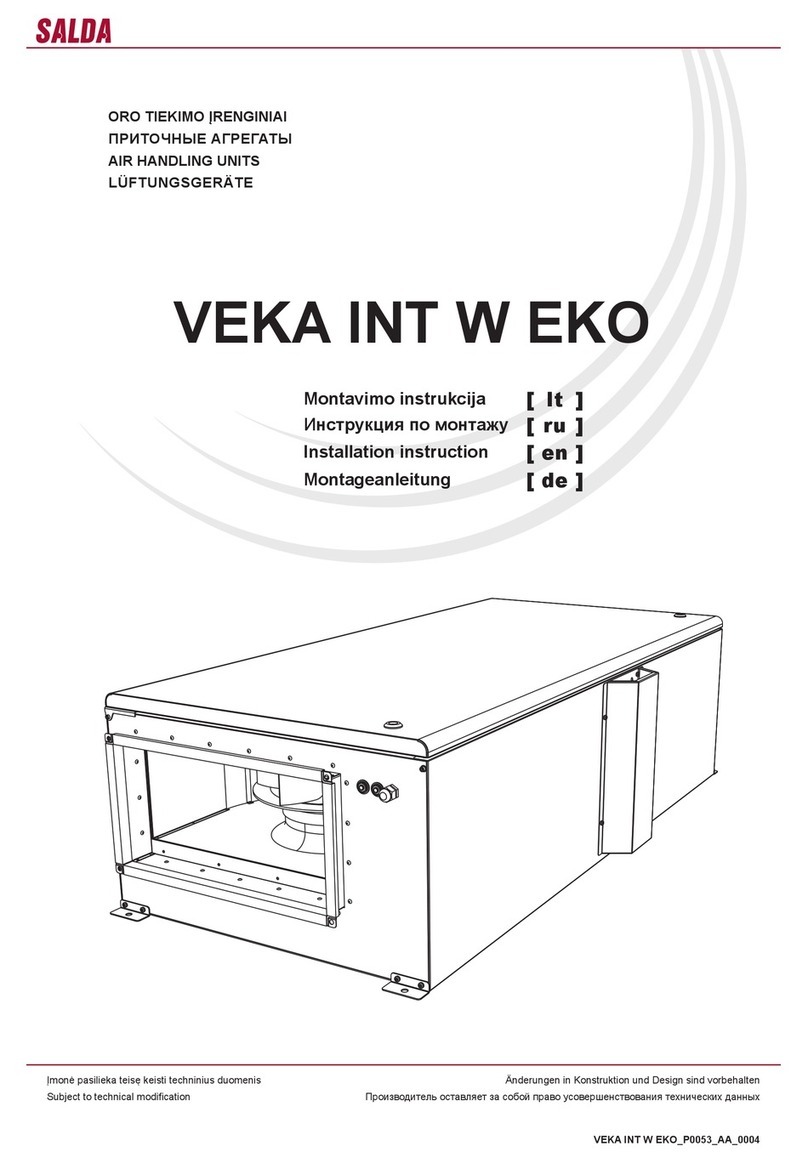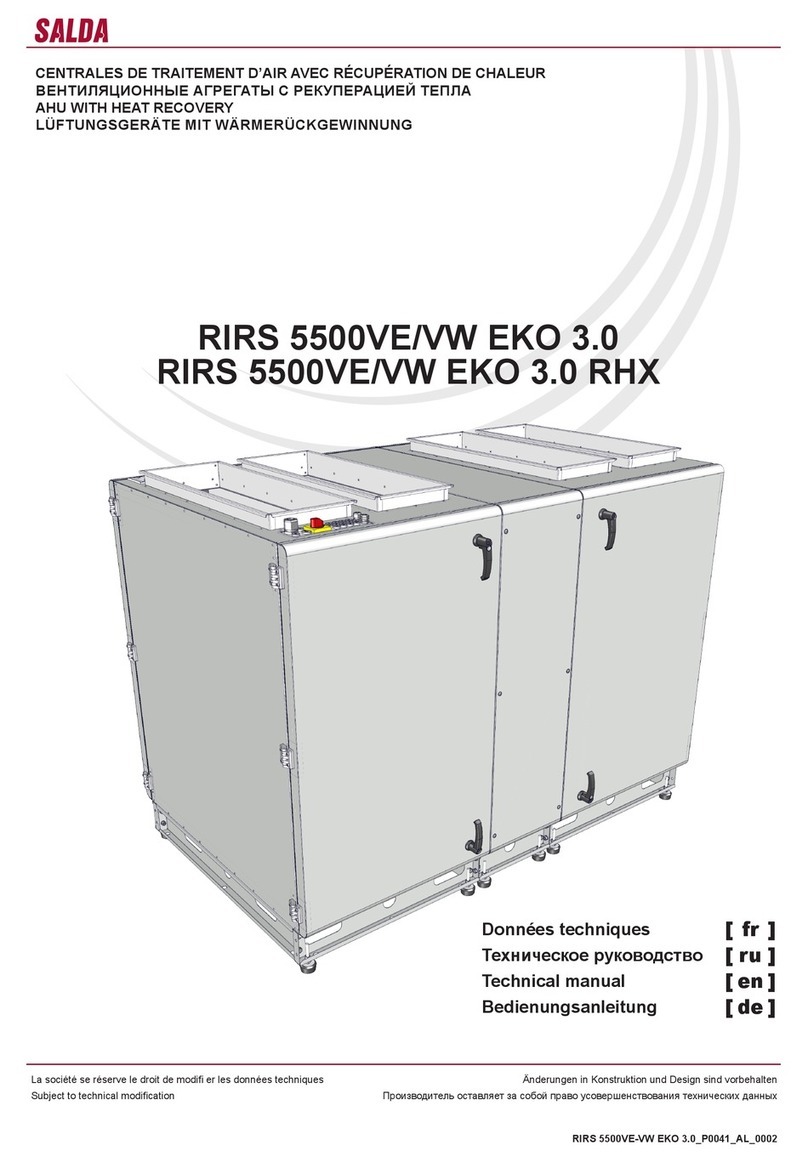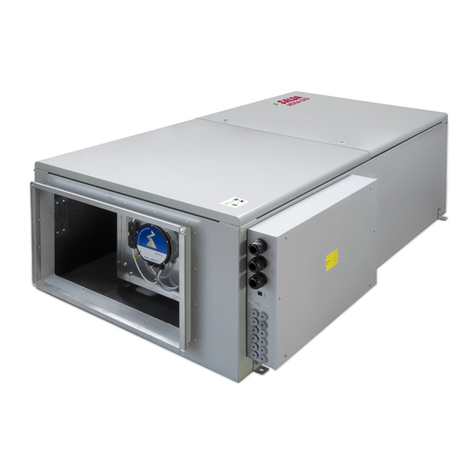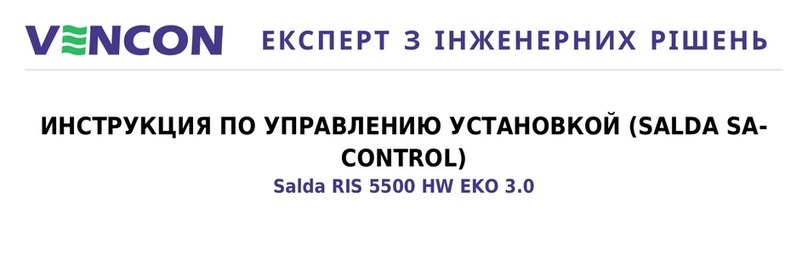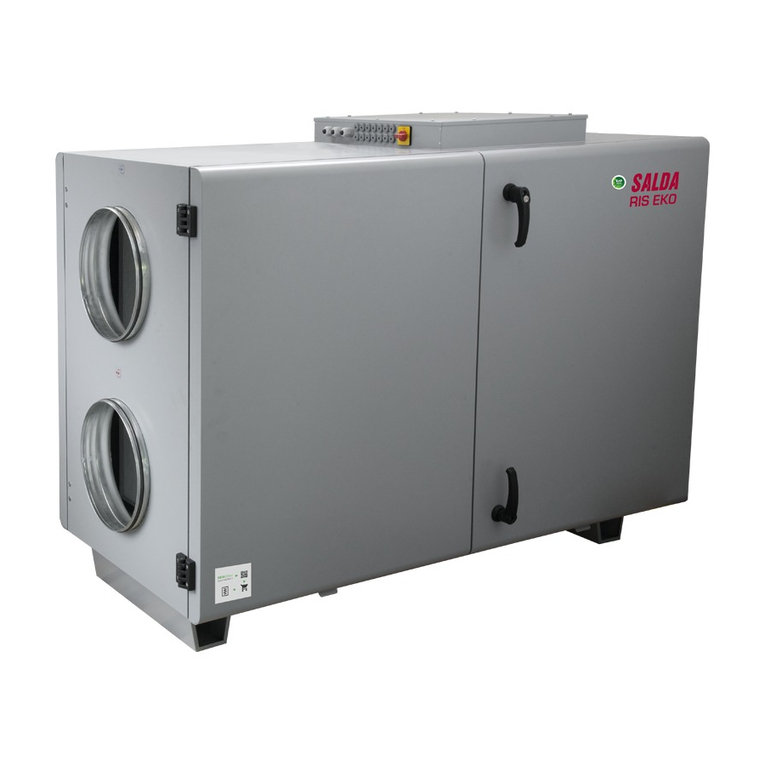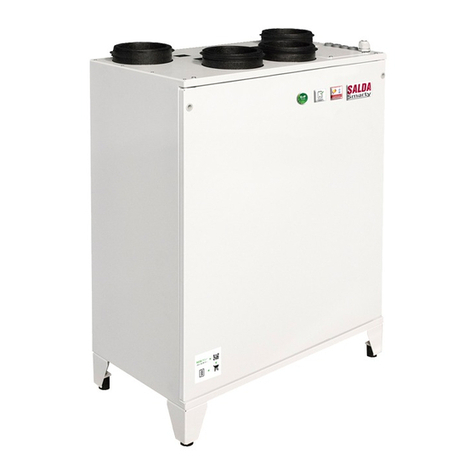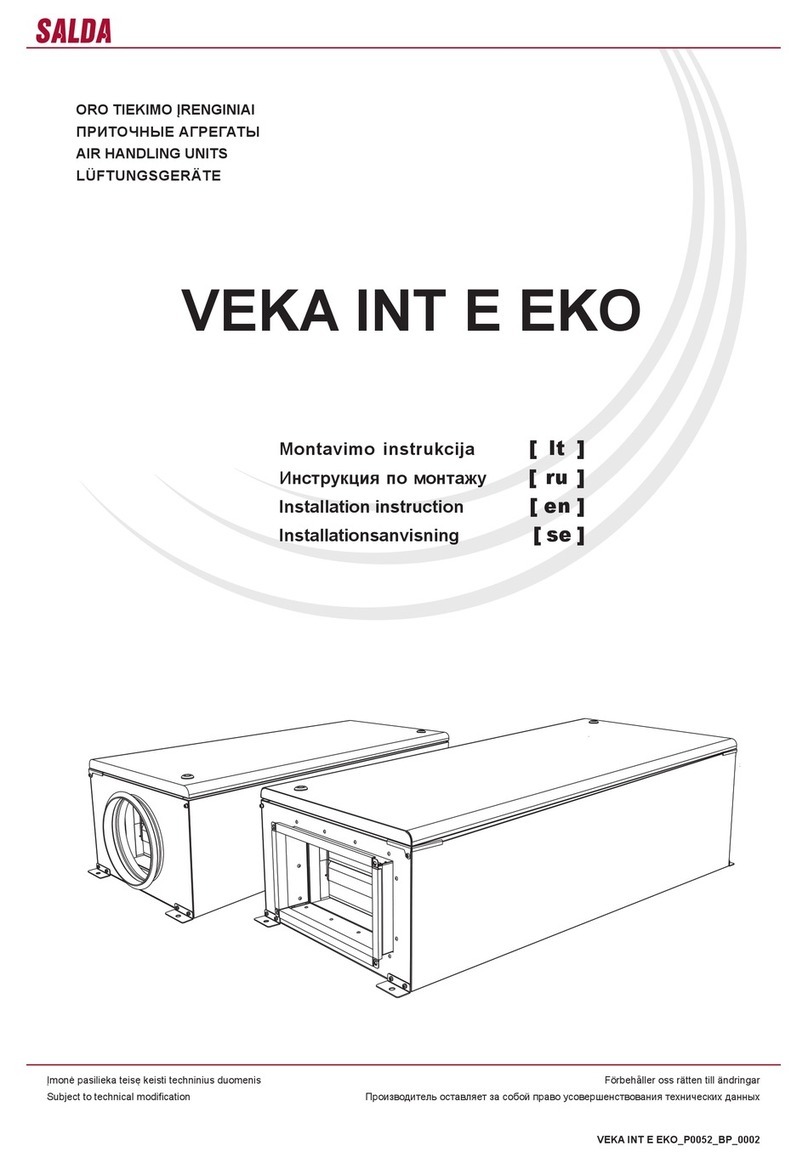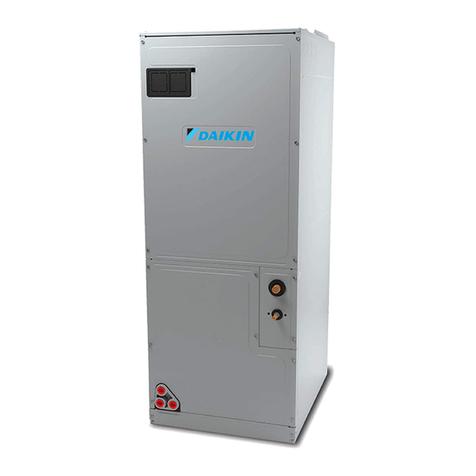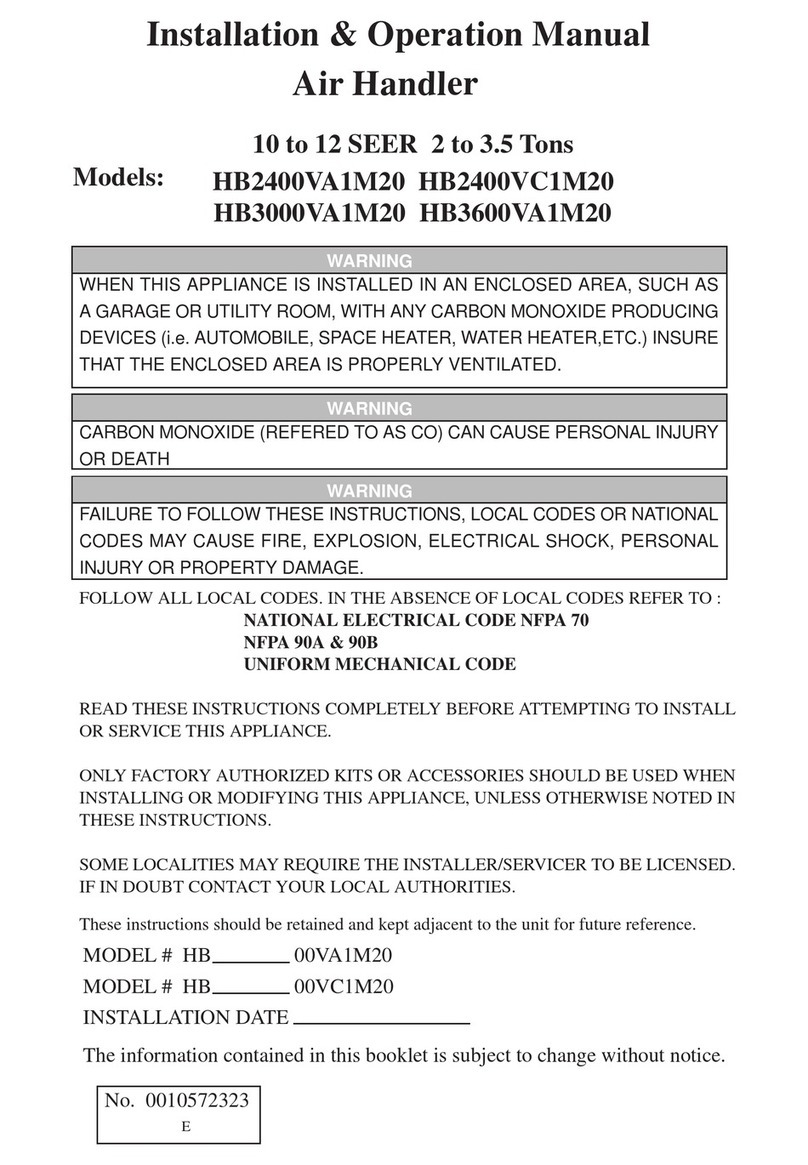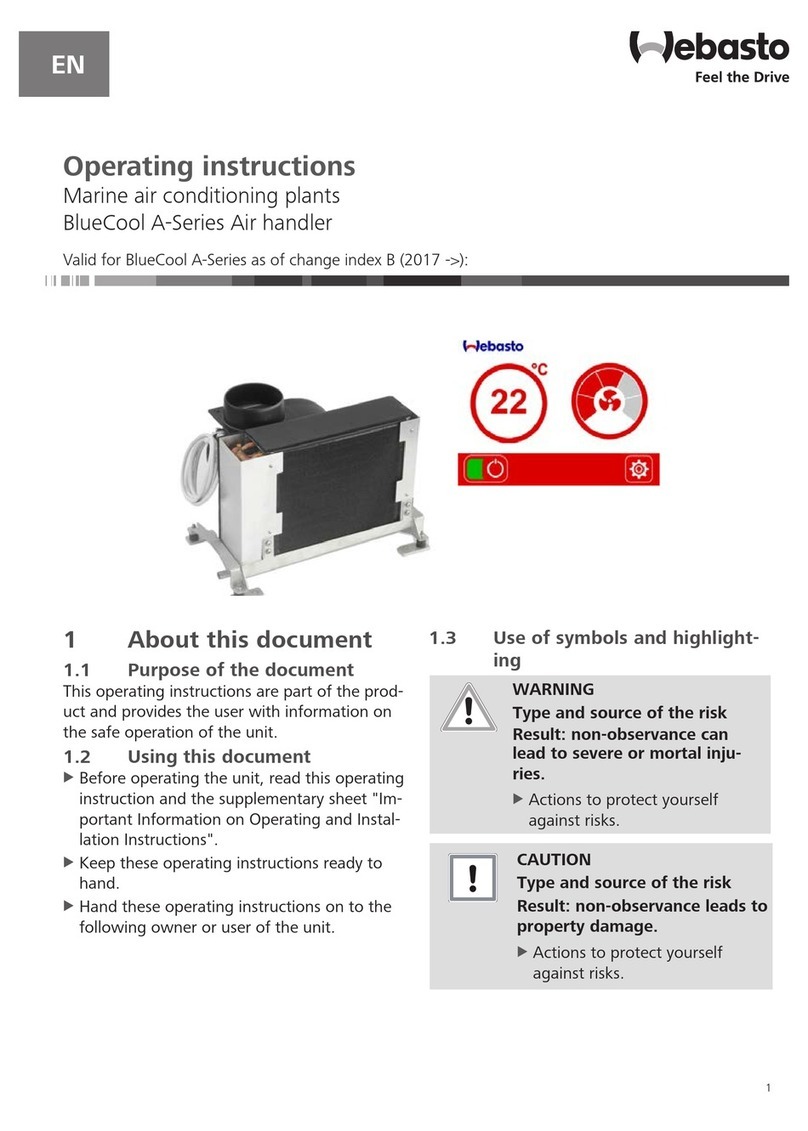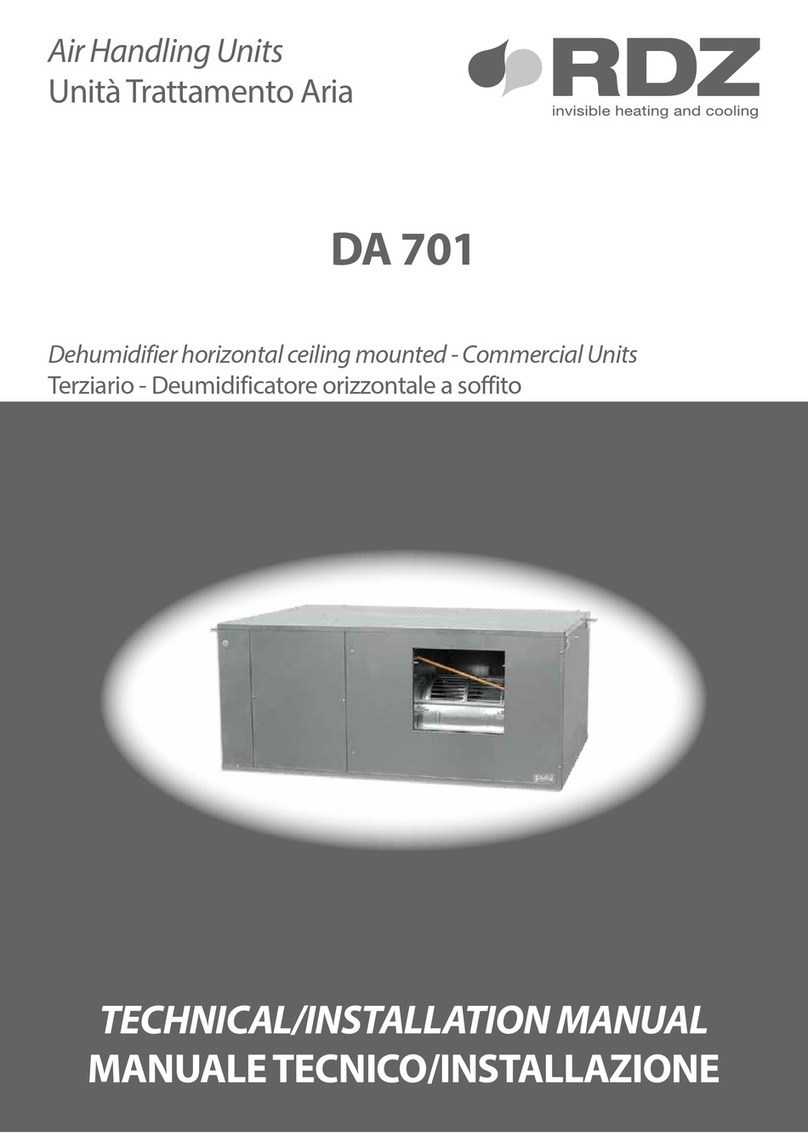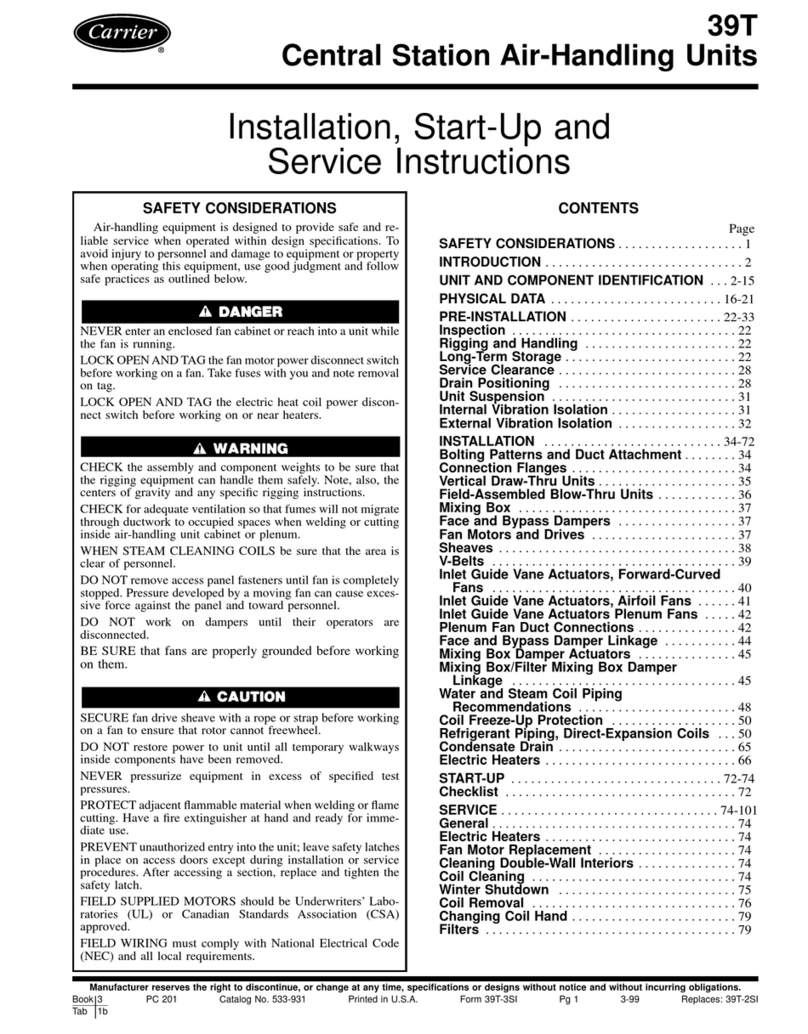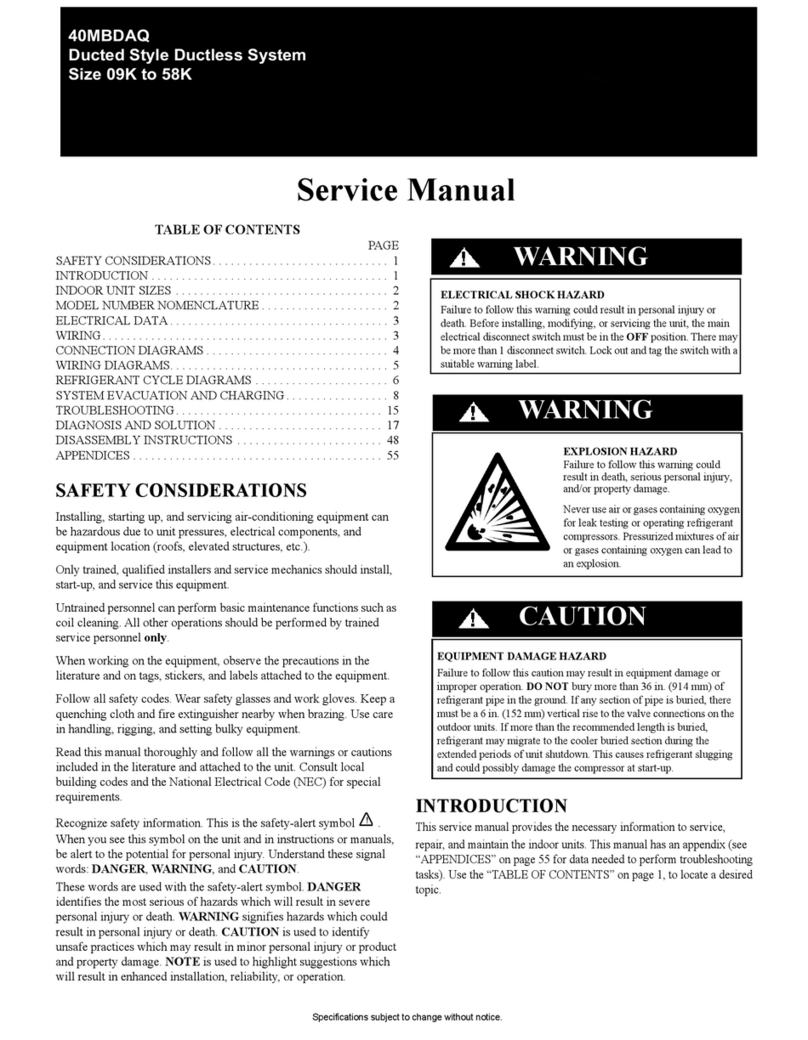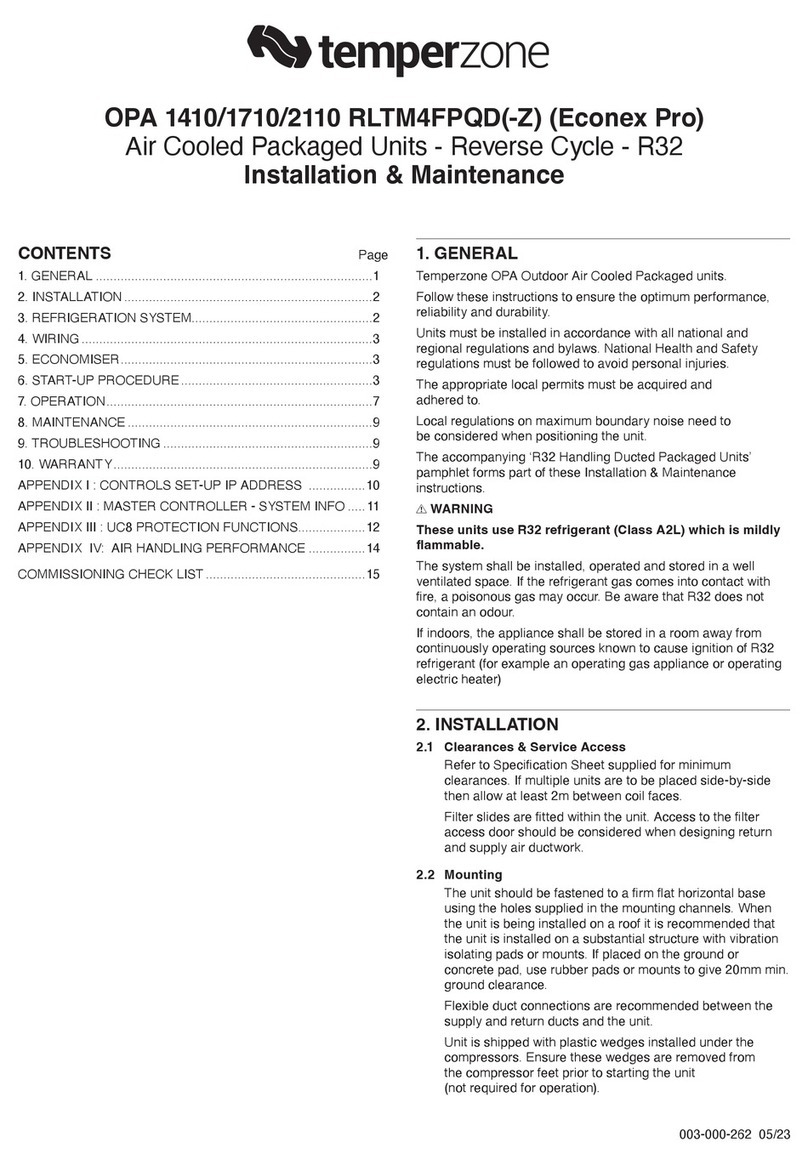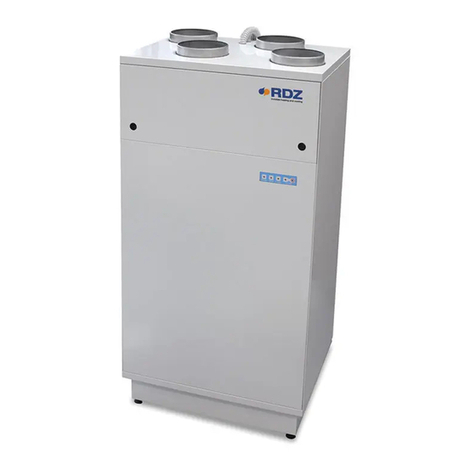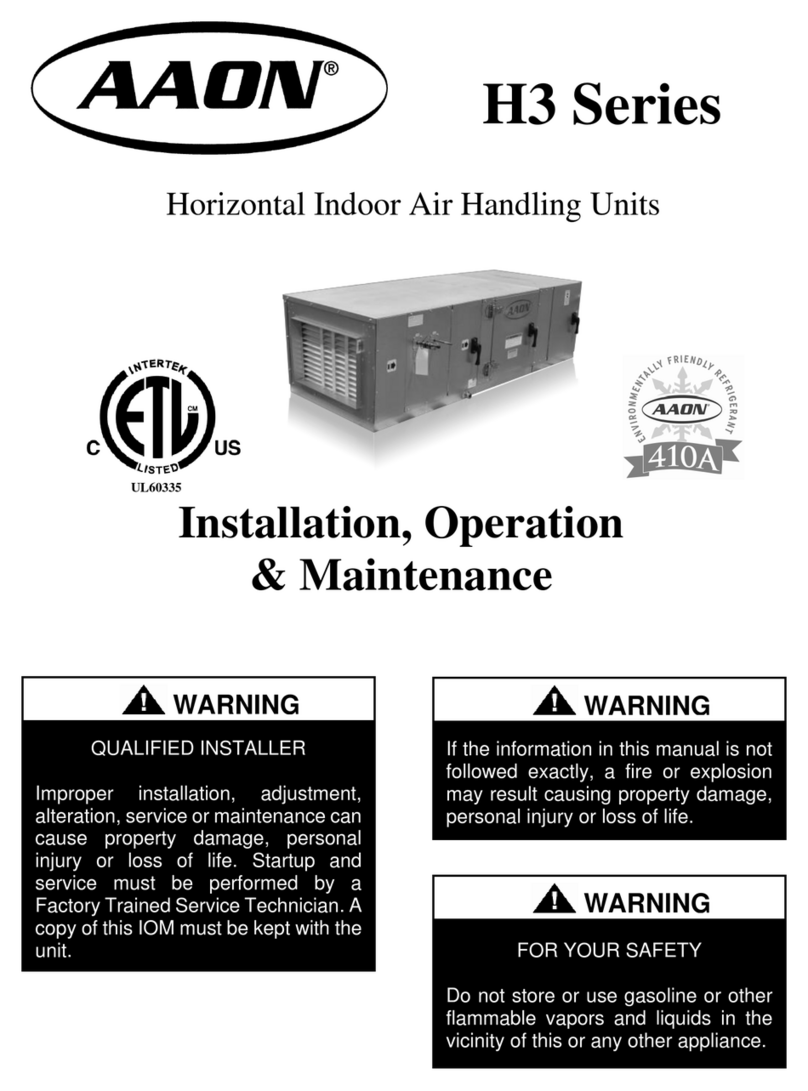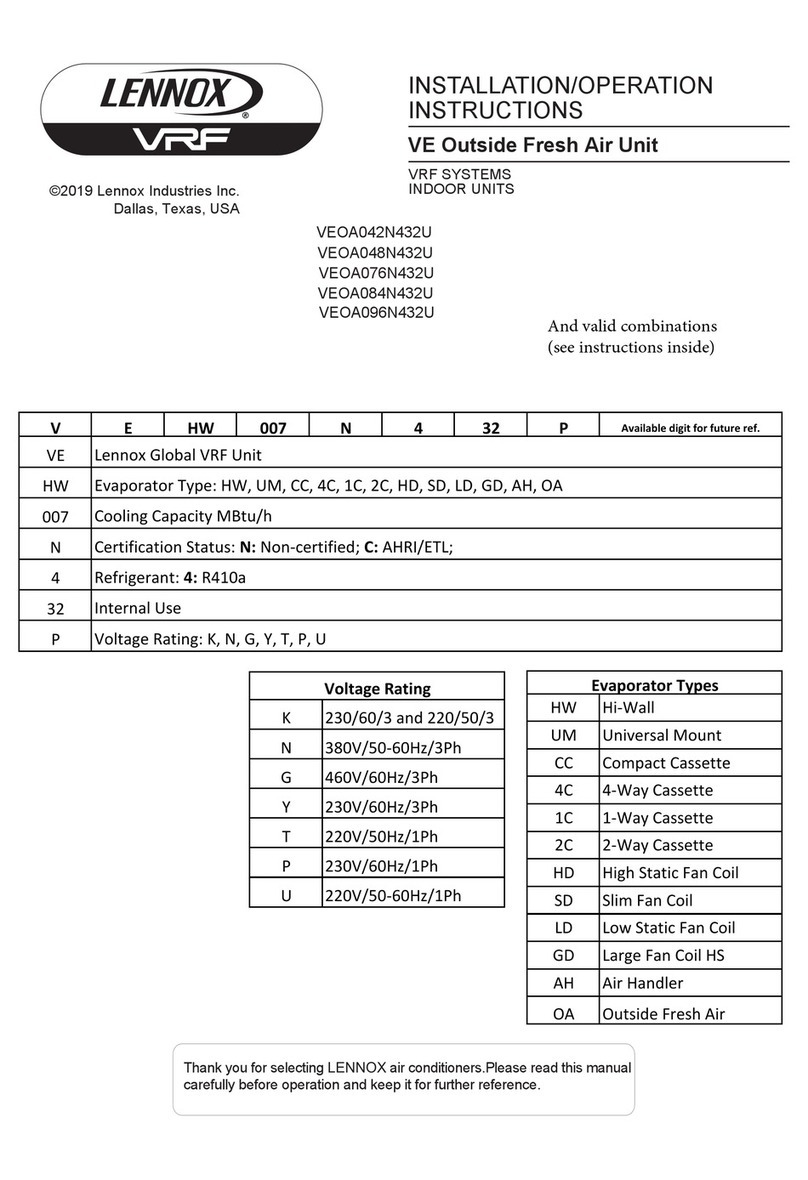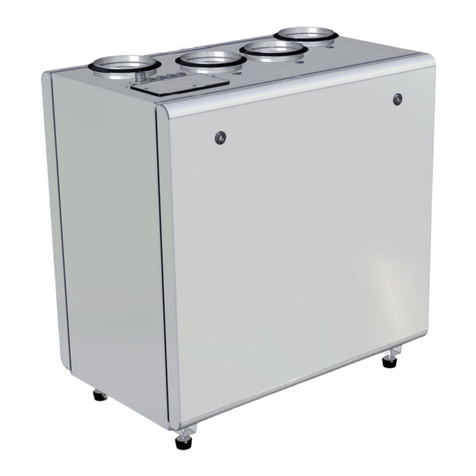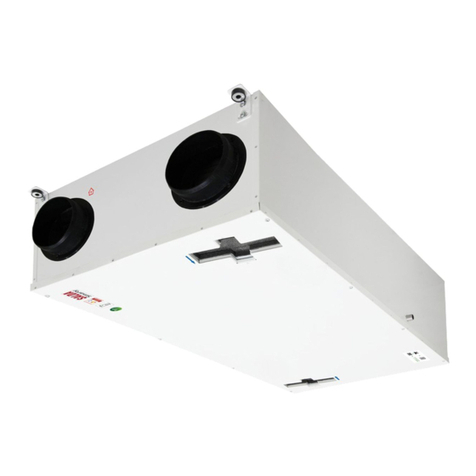
10 | EN RIS PE 3.0 v2020.1
5.5.3. DRAINAGE INSTALLATION
Before every heating season the condensate tube shall be lled with water as indicated during the rst start-up! Before every heating
season the condensate tube shall be lled with water as indicated during the rst start-up!
AHU (1) is built on a foundation in a such way that the side of AHU (1) with drainage exhaust pipe (2) is lower 0°- 3°than the other side (the con-
crete max. value is shown on the picture). The side of AHU with drainage pipe can not be higher than the other side.
The system must be connected with pipes (4,5) in such order: AHU (1), siphon (3) and sewerage system (6). Pipes (4,5) should be bended not
less than 3° (1 meter of pipe must be bended 55 mm downwards)! Before turning on AHU (1) the draining system should be lled up with at least
0,5 l of water (siphon (3) must be always lled with water), also check if water reaches sewerage system (6)! In other case premise can be ooded.
Draining system must be installed in the premise where the temperature is not lower than 0°C. If temperature falls below 0°C the draining system
should be isolated with thermal isolation or heating installed.
The siphon (3) must be mounted below the AHU (1) level.
5.6. CONNECTION OF THE AIR DUCT
• Connected air ducts must be straight and have their own xing.
• Make sure that the fans can not be entered through air duct heads. If it is possible to enter the fan, protective grid should be installed. You can
choose it in our website.
• Do not reduce the diameter of the piping near air inlet or exhaust ducts. If you want to reduce the speed of air in the system, drop of pressure
and noise level, you can increase the diameter.
• In order to reduce the level of the noise in the air supply system, install dampers (see chapter on their installation).
• In order to reduce air loss in the system, the air ducts and prole parts should be of class C and higher. Their catalog can be found in our website.
• Outside air and exhaust system piping should be isolated in order to prevent heat loss and condensation.
• It is recommended to maintain a distance of up to 8 meters between air intake and air exhaust ducts. Air supplying system should be installed
further from potential air pollution sources.
• Use holders while installing air ducts next to the ventilation equipment. They suppress vibration and assure a rm installation of various system
parts. Necessary holders can be found in our catalog or website.
• A common mistake is that air ducts are connected in inappropriate place. On the ventilation equipment there are signs, indicating the air duct to
be connected. Before starting the system carefully check whether the work was performed properly.
5.7. CONNECTION OF THE UNIT TO ELECTRIC NETWORK
• Supply voltage to the unit must be connected by a qualied specialist following the manufacturer’s instructions and eective safety instructions.
• The unit’s power network voltage must correspond to electrotechnical parameters of the unit indicated in the technical decal.
• The unit’s voltage, power and other technical parameters are provided in the unit’s technical decal (on the unit casing). The unit must be connect-
ed to the voltage plug socket of the grounded power network in compliance with the eective requirements.
• The unit must be earthed according to the rules on installing electrical equipment.
• It is prohibited to use extension wires (cables) and power network plug socket distribution devices.
• Prior to carrying out any ventilation unit installation and connection activities (until its hand-over to the customer), the unit must be disconnected
from the power network.
• After installation of the ventilation unit, the power network plug socket must be accessible at any time and disconnection from the power network
is performed through the two-pole circuit breaker (by disconnecting phase pole and neutral).
• The unit must be thoroughly checked against damages (execution, control, measurement nodes) during transportation before it is connected to
the power network.
• The power cable can be replaced only by a qualied specialist upon the evaluation of the rated power and current.
The manufacturer does not assume any liability for personal injuries and property damage due to nonconformance with the
provided instructions.
